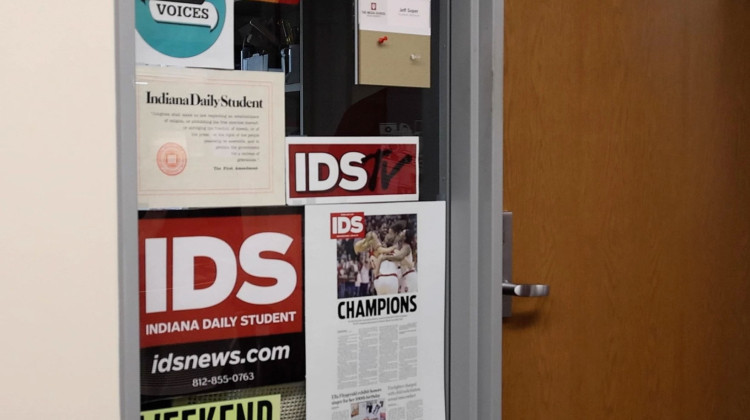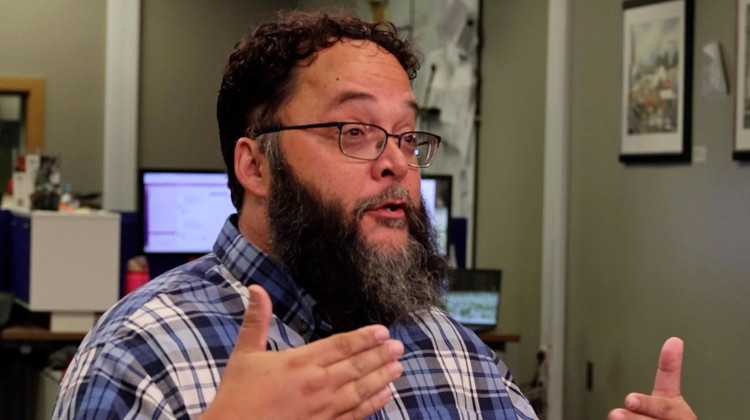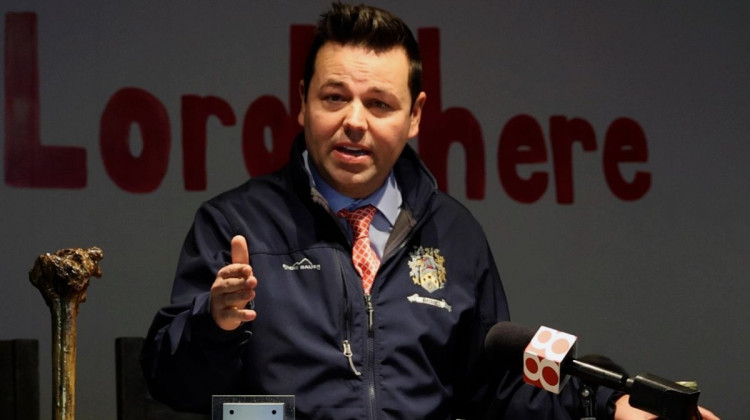
The cost to attend Indiana’s public colleges and universities will go up this fall, and increase again next year, according to the Indiana Commission for Higher Education.
Getty ImagesIndiana’s public colleges and universities are slated to increase tuition and fees over the biennium — up to 4.9% per year — despite pushback from some state lawmakers and budget officials.
Representatives from Indiana’s Commission for Higher Education (CHE) told the State Budget Committee last week that if tuition and fees must go up, the increase should be no greater than 3.5% each year.
Price hikes at six Indiana institutions will be at or below CHE’s target. Ivy Tech Community College is expected to increase its attendance costs by up to 5.9% by 2026, however.
CHE commissioner Chris Lowery emphasized that at Indiana’s public four-year colleges, in-state tuition and mandatory fee rates fell by an average of 2.1% annually over the last decade — the sixth largest decline in the nation.
“Indiana’s public institutions have been doing a good job in keeping tuition and fees at a reasonable rate for consumers,” he said. “We have great institutions, and they’re holding the line on costs.
But Seth Hinshaw, associate commissioner for finance and operations, noted “just how dramatic the increase in inflation has been,” specifically in the last two years. State schools have seen a nearly 26% increase in inflation from 2013, Hinshaw said. About 14% of the inflationary increase has occurred just since 2020.
Students face higher college costs
Tuition and fees at Ball State University and across the Indiana University system are slated to increase by 3% over the next two years. Indiana State University will raise costs by about 2.67% each year, while the University of Southern Indiana will go up 3.26%. Vincennes University approved 3.5%-per-year increases.
Purdue University’s West Lafayette campus will continue a decade-long freeze on tuition and fees at $9,992 per year. But the Purdue Northwest and Fort Wayne campuses will see 3% increases over the biennium.
In addition to tuition, mandatory fees are paid by all students at a college or university, including for health services, campus transportation and technology use. CHE does not track other non-mandatory fees imposed by schools, though, such as those for individual classes or student activities.
Story continues after graphic.

Key in Indiana’s next two-year budget are funding increases for the state’s higher education institutions — up 4% in the 2024 fiscal year and 6% in 2025 compared to appropriation levels in the last budget. That’s equal to $130 million in new money over the biennium.
But how much each state school gets will be determined by a new outcomes-based funding formula that is based on school-specific goals, rather than blanket recommendations.
At the heart of the current funding model, Indiana’s public higher education institutions are rewarded for growth, all based on the same five metrics. The model also uses averages over the last few recent years for various factors — such as on-time degree completion — to calculate the state’s fiscal responsibility moving forward.
CHE officials and state lawmakers agreed that Indiana should move away from that type of funding approach, and the new model will instead provide flexibility for institutions to work towards more individualized growth targets.
New goals for state schools — with some hesitation
The goal is to make Indiana a top-10 state for enrollment in post-high school training and education for both youth and adults. The changes also intend to increase degree completions and overall graduate retention. Prospective funding for post-secondary institutions — meaning the additional funding a college or university can earn on top of its base funding — will be gauged by each school’s progress toward those goals.
So, if a college meets 80% of its degree completion goal, the school gets 80% of the additional funding it qualifies for. Whatever is earned in the first year of the biennium is guaranteed in the second, with the opportunity to earn the remaining 20% of extra dollars in year two.
But after Ivy Tech Community College spoke out against the new outcomes-based funding model late last year, the state’s largest public postsecondary institution will have its own formula.
Legislators carved out a separate funding plan in the state budget that allows Ivy Tech’s goals to continue to center around employer needs, as well as increased wage outcomes and stackable credentials for students.
The community college previously maintained that — under the funding model for all other higher education institutions — recent progress made by Ivy Tech wouldn’t be rewarded, which could mean millions of dollars were no longer guaranteed.
“By breaking out each institution into being measured only against themselves, it allows us to provide more variety in the weighting that we provide to each of these institutions and each of these metrics categories,” Lowery said. “I’m convinced — we’re convinced — that Indiana has what it takes — has the institutions, has the people — to be top 10 in these areas, and that it’s going to benefit individual Hoosiers, our employer partners around the state, and frankly, our communities, too.”
Still, Sen. Chris Garten, R-Charlestown, who sits on the State Budget Committee, said he has “a really hard time” dedicating 15% of high education funds to enrollment-boosting efforts. Additionally, he questioned whether the award-based model has forced institutions to raise tuition because some of their prospective funding is unknown.
“To me, if I relate this to the private sector, this is a business model that’s compensating a salesperson on cold calls that create no outcome,” Garten said. “I do find it a little bit ironic that this is an outcomes-based formula that we’re dedicating 15% of the monies to that has nothing to do with outcomes.”
“I don’t think enrollment outcomes are related,” he continued. “I think if we’re more heavily focused on the completions, that will drive enrollment organically — it has to.”
Hinshaw maintained that the outcomes-based performance funding formula “is a large sum of money, but it is larger to some institutions than to others.” The formula was created to ensure that whatever each institution earns in year one of the biennium is also earned, at minimum, in year two.
“I feel pretty confident in saying that — while absolutely institutions have the responsibility to set their tuition and fees … that new funding that’s at risk is, frankly, probably less substantial than even a 1% enrollment change for that institution,” he said.
College-going rate ‘not improved’
Lowery also indicated that Indiana’s already dismal college-going rate has declined by roughly another half-percent.
Data released last year showed that only half of Indiana’s 2020 high school graduates pursued some form of college education beyond high school. The drop marked the state’s lowest college-going rate in recent history, but the decline has been ongoing for the last five years.
Of those high school graduates who attend college, only two thirds are on track to complete a degree.
Official numbers for 2021 are expected to be released in the coming weeks.
“The fact of the matter is, the college going rate for youth … it’s not improved,” Lowery said, adding that the adult going rate has declined at almost the same rate. “It hasn’t declined as much … but while the improvements have been good, they’re just not good enough. We’re expecting to see improvements based upon the actions that are being taken and have been taken the past year.
State lawmakers made efforts in the most recent legislative session to get more Hoosiers educated. That included automatic enrollment for 21st Century Scholars — a statewide grant program that funds lower income student attendance at two- and four-year schools — and a requirement for all high school seniorsto complete the Free Application for Federal Student Aid (FAFSA).
A new partnership between CHE and many of Indiana’s higher education institutions will also ensure that rising high school seniors statewidegain “pre-admission” letters from at least three schools.
“Short term certificates through associate degrees, bachelor’s, master’s, doctorate degrees — we need all of those things,” Lowery said.
Sen. Fady Qaddoura, D-Indianapolis, also on the budget committee, called for CHE to further investigate why Hoosier students aren’t pursuing degrees. That way, state officials can better address the college-going decline more directly.
“I think we’ve reached a point that we cannot continue to do things the same as over the last 30 years. And we need to truly invest in understanding the why, because otherwise, next session, we’re going to come back with five pieces of new legislation, thinking that the decline is going to be a little bit less than the year before,” Qaddoura said. “If you ask me about the one major policy that keeps me up at night, it would be the state’s difficulty of not being able to improve these statistics, because our economy is dependent on those students graduating.”
Rep. Ed DeLaney, D-Indianapolis, said lowering tuition is still the best answer.
“We have declining enrollment. I understand math — we lost about 25,000 students from our public higher education in the last five or six years. In normal market thoughts, we would be lowering the tuition,” he said. “And if we’re going to have incentives, they ought to reach the customer, not the intermediary. Telling a parent that if more kids enroll and more kids complete on time, the university will get more money. It’s not going to sell them anything. They’re not going to see that. So what’s wrong with lowering tuition? I think we have great schools, and our customers aren’t showing up.”
 DONATE
DONATE






 Support WFYI. We can't do it without you.
Support WFYI. We can't do it without you.